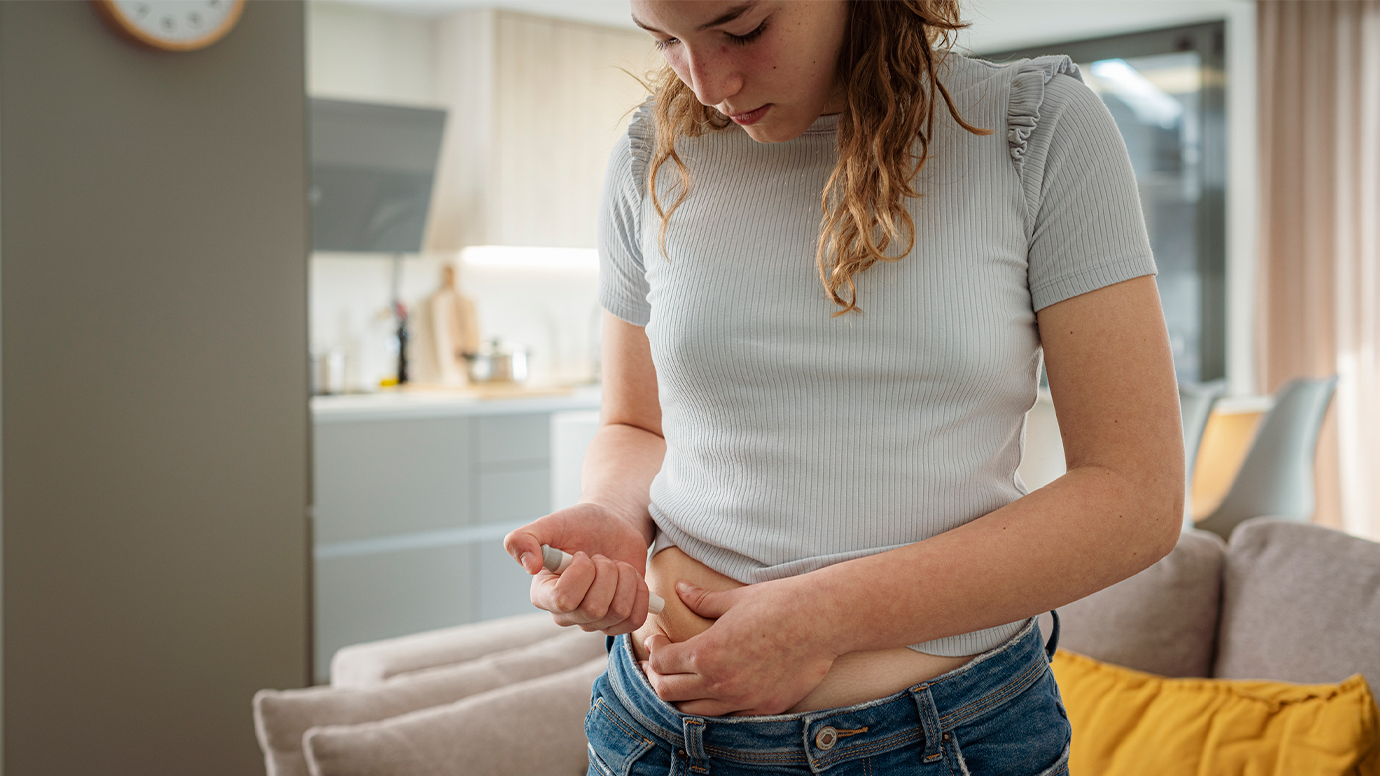Closed-Loop Pumps: Simplifying Diabetes Management
Written by: Ginger Vieira
3 minute read
June 4, 2022
Managing diabetes can feel like a full-time job, but closed-loop pumps are making life a lot easier for people with type 1 and type 2 diabetes.
These systems, also called automated insulin delivery (AID) systems, combine an insulin pump, a continuous glucose monitor (CGM), and smart algorithms to adjust insulin delivery automatically.
Closed-loop pumps adjust insulin levels automatically based on real-time glucose readings to help lighten the burden of managing glucose levels.
How closed-loop insulin pumps help people with diabetes
Closed-loop systems are designed to reduce the constant stress of managing glucose levels. While they’re mostly used by people with type 1 diabetes, they’re also an option for those with type 2 diabetes who take multiple daily insulin injections.
Research shows these systems can:
- Improve time-in-range (the percentage of time blood sugar stays in a healthy range) by about 10%.
- Help more kids achieve A1c levels below 7% or 9%.
- Lower the risk of diabetic ketoacidosis (DKA) hospitalizations.
- Reduce hypoglycemia (low blood sugar) and time spent below range.
The benefits of closed-loop insulin pump systems
Today, there are over 400 proposed closed-loop algorithms, but only four have been FDA-approved and are currently on the market.
-
Medtronic MiniMed 770G: Approved in 2020, it offers Bluetooth connectivity and is approved for use in children as young as 2 years old.
-
Medtronic MiniMed 780G: Approved in April 2023, this advanced hybrid closed-loop system provides improved glycemic control features, including automatic adjustments every five minutes and meal detection technology
-
Tandem t:slim X2 with Control-IQ: Approved in 2019, this system integrates with the Dexcom G6 CGM and uses predictive algorithms to adjust insulin delivery
-
Insulet Omnipod 5: Approved in 2022, this is the first tubeless hybrid closed-loop system. It integrates with the Dexcom G6 CGM and offers smartphone control.
Experts cautioned against comparing data from one system to another due to the many different characteristics of each system and variances in continuous glucose monitor (CGM) results.
Tips for using closed-loop systems
Education is key to getting the most out of these systems. Here are some tips for users:
- Treat low blood sugar with fewer carbs to avoid rebound highs.
- Learn how to respond to continuous glucose monitor (CGM) trends and insulin on board.
- Minimize alarms to prevent alarm fatigue—only keep the critical ones.
- Avoid “tricking” the system by entering fake carb counts or taking extra insulin outside the pump. This can cause blood sugar swings and reduce the system’s effectiveness.
- Be prepared to switch to manual mode during sick days, intense exercise, or pregnancy.
- Use extended boluses for high-fat or high-protein meals to prevent lows as the food digests slowly.
What’s next for closed-loop technology?
While these systems are a huge leap forward, there’s room for improvement. Future advancements could include:
- Faster-acting insulin.
- Better compatibility between different pumps and CGMs.
- Implantable CGMs for easier use.
- More affordable and accessible systems for everyone.
Closed-loop insulin pumps are transforming diabetes care, helping people spend more time in range and less time worrying about their blood sugar. As technology continues to evolve, the future looks even brighter for those managing diabetes.

Author
Ginger Vieira
Ginger Vieira is the senior content manager at Beyond Type 1. She is also an author and writer living with type 1 diabetes, celiac disease, fibromyalgia and hypothyroidism. She’s authored a variety of books, including “When I Go Low” (for kids), “Pregnancy with Type 1 Diabetes,” and “Dealing with Diabetes Burnout.” Before joining Beyond Type 1, Ginger spent the last 15 years writing for Diabetes Mine, Healthline, T1D Exchange, Diabetes Strong and more! In her free time, she is jumping rope, scootering with her daughters, or walking with her handsome fella and their dog.
Related Resources

Starting in January 2026, Civica Rx, a nonprofit drug manufacturing company, will launch its affordable...
Read more

When you live with diabetes and are sick with the flu or a virus, a...
Read more

Training for a marathon takes a lot—hundreds of miles on the pavement, time and the...
Read more

